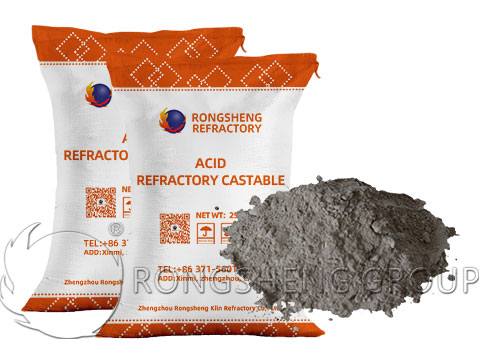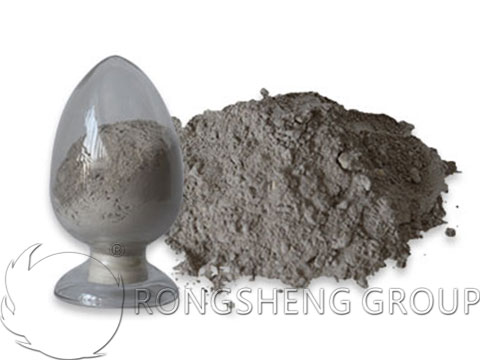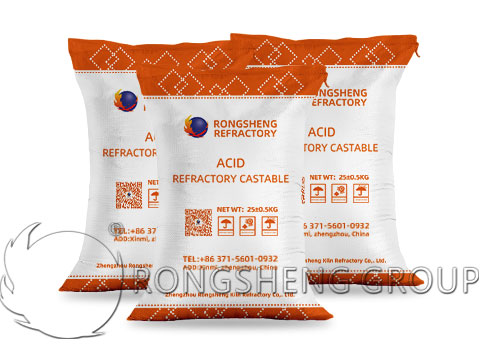
Selected Configuration of Acid-Resistant Castable Raw Materials
Castable refractory materials that can resist the corrosion of acidic media (nitric acid, hydrochloric acid, sulfuric acid, acetic acid, etc.) at 800~1200 °C are called refractory and acid-resistant castables. It is prepared with water glass as binder, acid or weak acid refractory material as aggregate and powder, and a small amount of coagulant. However, such castables are not resistant to corrosion by alkali, hot phosphoric acid, hydrofluoric acid and high fat. The raw materials for configuring such castables are rich in sources and low in price, so they are widely used in thermal equipment in metallurgy, chemical, petroleum, light industry and other sectors.




Selected configuration of acid-resistant castable raw materials
The general ingredients of acid-resistant refractory castables are: acid-resistant refractory aggregate 60%-70%, powder 30%-40%, and water glass solution with an external density of 1.38-1.42g/cm3 13%-16%. When sodium fluorosilicate is used as the hardening agent, the addition amount is 10%-12% of the mass of the water glass solution.
Refractory aggregate for acid-resistant castables
The aggregates used to configure acid-resistant refractory castables mainly include silica, cast stone, wax stone, andesite, diabase, etc. The acid resistance (weight method, %) of several commonly used raw materials is: cast stone 98%, silica more than 97%, clay clinker 92%~97%, wax stone 92~96%, andesite more than 94%. The choice of raw materials depends on the conditions of use. However, when using silica, attention must be paid to the polycrystalline transformation of quartz when heated, and a volume change (expansion) occurs during the transformation. Therefore, it is better to use waste silica bricks to replace part of the silica raw materials as aggregates. The powders for configuring this castable mainly use silica powder, cast stone powder, porcelain powder, high siliceous clay clinker powder, etc. A lot of acid-resistant powder.
Binder for acid-resistant castables
The binder water glass should use water glass with a higher M to reduce the amount of Na2O brought in by the water glass and improve the acid resistance. Generally, a water glass solution with a modulus of 2.6-3.2 and a density of 1.38-1.42 g/cm3 is used. There are many compounds that can be used as water glass coagulants. Including fluorine-containing compounds (such as fluorosilicic acid, fluoroboric acid, alkali metal salts of fluorotitanic acid), esters, acids (such as ethyl acetate), metal oxides (such as lead, catalium, barium and other oxides), and carbon dioxide gas (CO2). But the most widely used is sodium fluorosilicate (Na2SiF6), which is easy to use and easy to control the setting and hardening time.

Application of acid-resistant castables
Acid-resistant refractory castables are mainly used as anti-corrosion flue and chimney lining, acid storage tank, pickling tank lining, nitric acid pyrexia tower lining, acid recovery furnace lining. And other container linings that are corroded by acidic high-temperature gases.
Precautions for packaging, storage and transportation of unshaped refractory samples
There are many varieties of unshaped refractory materials, which may deteriorate during production, sampling and testing, and the storage sample castables cannot exceed the shelf life. There are many reasons for deterioration.
1) If the dry powder material in the castable containing the binder or the fire-resistant spray coating is easy to absorb moisture, these materials should be waterproof or moisture-proof.
2) Ready-to-use ramming materials, refractory plastics and other materials that already contain liquid binders should be stored in sealed plastic bags. If a hard skin is formed, the hard skin must be removed from the bulk prior to molding. It is necessary to estimate the number of epidermis to determine the aliquot size.
3) For fire-resistant spray coatings and joint materials, similar precautions should be taken. And these materials often employ high proportions of binders, which may require additional measures.
After sampling, increments should be stored, fractionated and tested in a cool room as soon as possible. In the case of resin-bonded and phosphoric-acid-bonded materials, the storage conditions should be determined through consultation between the two parties. Samples should be packaged in the condition in which they were stored at the time of sampling. If necessary, in order to maintain humidity or volatile matter, it should be stored in an airtight container.
Samples mailed or transported to a third-party laboratory should be sealed in a manner that ensures that the properties of the material are not affected and that it is easy to store.

Rongsheng Acid Resistant Castable Manufacturer
Rongsheng acid-resistant castable manufacturer is a refractory manufacturer with rich production and sales experience. Rongsheng's refractory brick production line and unshaped refractory production line provide reliable operation guarantee for the refractory lining of high temperature kilns. Rongsheng's refractory brick products and unshaped refractory products have been exported to more than 80 countries around the world. For example, etc. To purchase high-quality acid-resistant castables, refractory plastics, refractory ramming materials, and refractory brick products, please contact us. We will provide you with the most suitable refractory lining material for your production needs according to your specific working conditions.
Tags: Acid-Resistant Castable, Acid-Resistant Castable Raw Materials,
Inquiry
If you want to learn more about our Refractory Products, please feel free to fill the inquiry form below.
We will get in touch with you ASAP!
Copyright @ Zengzhou Rongsheng Kiln Refractory Co., Ltd. All Rights Reserved | Site Map | ExportBureau profile


